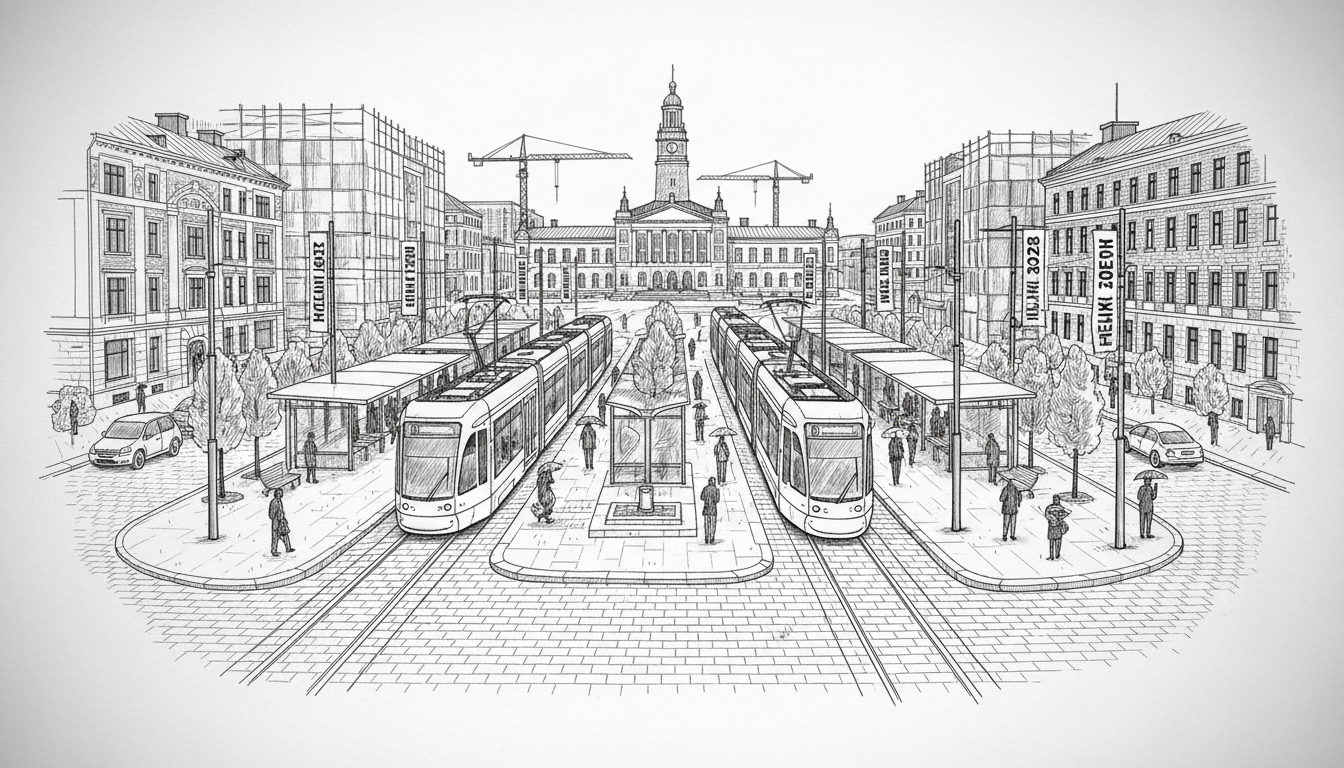Helsinki plans a major overhaul of the Central Railway Station district. The city will convert Kaivokatu into a dedicated public transport street. Private car traffic will move to side streets like Postikatu and Bergbominkuja. This transformation addresses severe congestion in Finland's busiest transportation hub.
The station area currently handles staggering daily traffic. About 185,000 public transport passengers pass through alongside 20,000 vehicles. This creates dangerous crowding at tram stops and pedestrian crossings. People cannot wait safely near tram stops without blocking others. Cyclists and pedestrians regularly face hazardous situations.
City officials describe the current environment as inadequate. They note arriving passengers have no proper waiting space without obstructing foot traffic. The planned changes will dramatically improve pedestrian experience. Kaivokatu will become an open public space with greenery, benches, and services.
Tram infrastructure will see major upgrades. The number of tram stops doubles from two to four. Each new stop measures 61 meters long. This allows two regular trams or one express tram to stop simultaneously. During peak hours, Kaivokatu handles about 40 tram departures per direction.
Why does Helsinki need this transformation now? The city faces increasing pressure from new transit projects. The Laajasalo tram line extension from Hakaniemi to West Harbor requires additional track capacity. Future connections like the Western Helsinki tram line will bring more passengers downtown in coming years.
Construction is scheduled to begin in 2028 alongside water insulation renewal work. The timing aligns with broader city development plans. This represents Helsinki's continued commitment to prioritizing public transport over private vehicles.
What does this mean for daily commuters? Pedestrians will gain significantly more space for waiting and moving. The expanded tram stops will reduce crowding during rush hours. The added greenery and seating will create a more pleasant urban environment. Motorists will need to adjust to using alternative routes through the city center.
The project reflects Helsinki's urban development strategy. The city consistently invests in public transportation and pedestrian-friendly infrastructure. Similar transformations have occurred in other Nordic capitals like Stockholm and Copenhagen. These cities demonstrate that reducing car traffic in central areas improves urban life.
This redevelopment represents a substantial investment in Helsinki's future mobility. It acknowledges that the city's growth requires rethinking traditional traffic patterns. The changes will likely influence how other Finnish cities approach their own central district planning.

